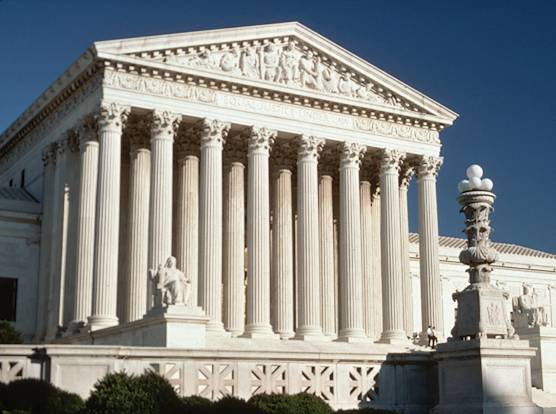The Small business Reorganization Act of 2019 roared in to life six months after its passage, on February 19, 2020, just in time for businesses to test its effectiveness given the ongoing corona virus crisis. Most lawyers and business people have at least heard of the existing Chapter 11 laws — at various points Delta Airlines, Donald Trump’s Atlantic City casinos, and General Motors have all partaken — but many are wondering what exactly is this new law, and how does it fit in or differ with what came before? Here’s a short primer on what to expect from the new legislation:
- Filing fees: Traditional Chapter 11 cases come with a $1,717.00 filing fee. So do cases under the small business version — so $1,717.00 gets everyone’s case filed.
- Trustees: Traditional Chapter 11 cases rarely use case-specific trustees. All interaction usually is with the U.S. Trustee’s office. Every small Business case will have a case trustee assigned — a significant departure from pre-existing practice, and one more closely resembling how Chapter 13 cases are handled.
- Implementation: The new act is located in a brand-new “Subchapter V” at 11 USC ss. 1181 through s. 1195. Many of the definitions and procedures of traditional Chapter 11 are re-worded or even eliminated. Hence, there are traps for the unwary galore. Local rules and new forms are on the way — and have even arrived in many districts.
- Small vs. Large: Initially, a business was considered “small” if it had total debt of less than $2,725,625.00, and more than 50% of that debt is from the commercial or business activities of the debtor. As of March, 2020 the limit was raised to $7 million in response to the corona virus economic slowdown. Small business cases filed by self-employed individuals are allowed. Note that some individuals may qualify under this standard, and some others may not. Also, treatment under the new rules is at the election of the debtor: there is nothing requiring their use, or prohibiting small cases from being filed under the traditional method. If no choice is stated, the case will be treated as a traditional one.
- Committees: Unsecured creditor committees will not be formed in small business cases unless they are specifically ordered by a judge for cause.
- Plans: Small business debtors will have ninety days after the start of the case to file a plan. Only a debtor can file a plan. In traditional cases, creditors may file their own competing plans, and vote for them over the debtor’s plan.
- Disclosure statements: Traditional Chapter 11 cases require detailed disclosure statements concerning the history of the business and its operations. These are eliminated in small business case. This should save some legal expense, as drafting the statements can be a major undertaking for the debtor’s law firm. Some of the disclosure information has merely been shifted to the Chapter 11 plan, however.
- Business loans and venture capital secured by a personal residence: For the first time ever, debtors who qualify for small business treatment will be able to modify some of the mortgages on their homes. To modify (or “cram down” in bankruptcy lingo) a mortgage, the proceeds of the loan must have been used primarily in the business, and not primarily to buy the house. This section has the potential to be a major benefit to debtors who have pledged their homes in order to access capital for their enterprise.
- Consensual confirmation: If all impaired classes vote to accept the debtor’s plan, confirmation will be by consent. In such a case, the debtor will receive a discharge upon confirmation, the reorganized debtor is responsible for making plan payments to the trustee, and the trustee will be terminated upon the “substantial consummation” of the plan.
- Cram downs (i.e. confirmation over the opposition of one or more creditors): The rules for handling non-consensual plan confirmations are radically different from prior practice. A creditor’s ability to block confirmation by voting against the debtor’s plan has been significantly weakened by the small business sub-chapter. In particular, the absolute priority rule (which often gives an individual creditor veto power over plans) is completely removed from small business cases. If there are classes of creditors who vote against a plan, a court can confirm it anyway (“cram it down”) if the court finds the plan does not unfairly discriminate and that it is fair and equitable to those who voted against the plan. When a plan is crammed-down, the trustee will continue to serve for the 3-5 year length of the plan, and will distribute the debtor’s plan payments to creditors according to the terms of the plan.
- Fair and equitable: the definition of what makes a fair and equitable small business Chapter 11 plan is quite different from traditional practice. Essentially, the absolute priority rule (11 USC s. 1129 (b) ) has been junked, and a definition similar to that used in Chapter 12 family farmer cases has been adopted, where the fairness of the plan is measured by the amount of disposable income committed to plan payments.
- Interviews: Small business debtors must still attend an initial intake interview at the U S Trustee’s office shortly after the case is filed.
- Accounting: Small business debtors still need to pay an accountant to compile monthly operating reports for the US Trustee’s office.
- Ongoing fees: Small business debtors are excused from the obligation to pay quarterly fees to the US Trustee.
-
By Doug Beaton
Attorney Douglas J. Beaton has practiced bankruptcy law in the Northeast for twenty six years, and is an active commentator on developments in bankruptcy practice and procedure. He can be contacted through this form:









